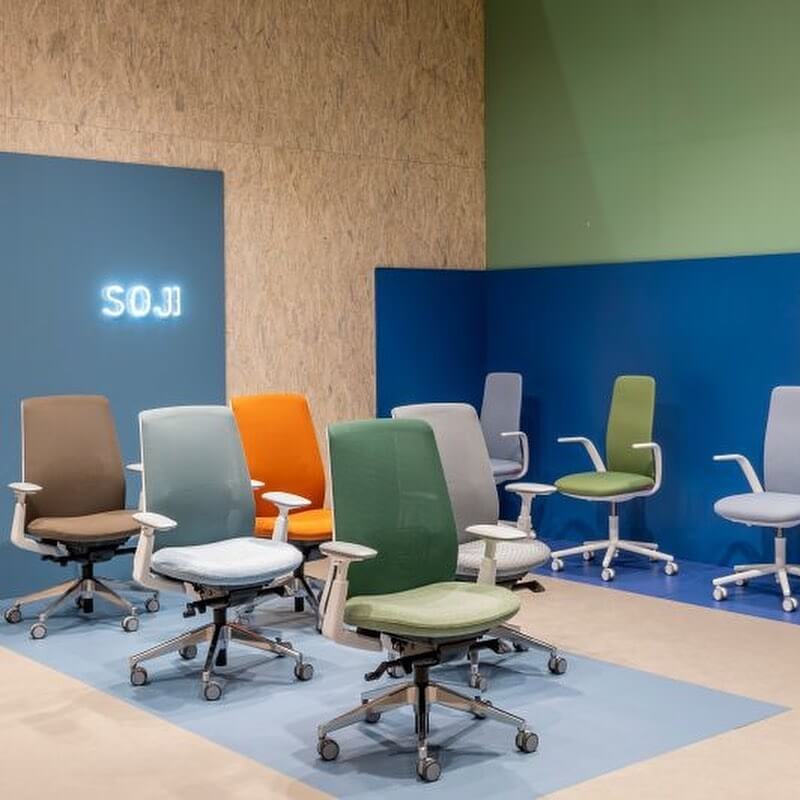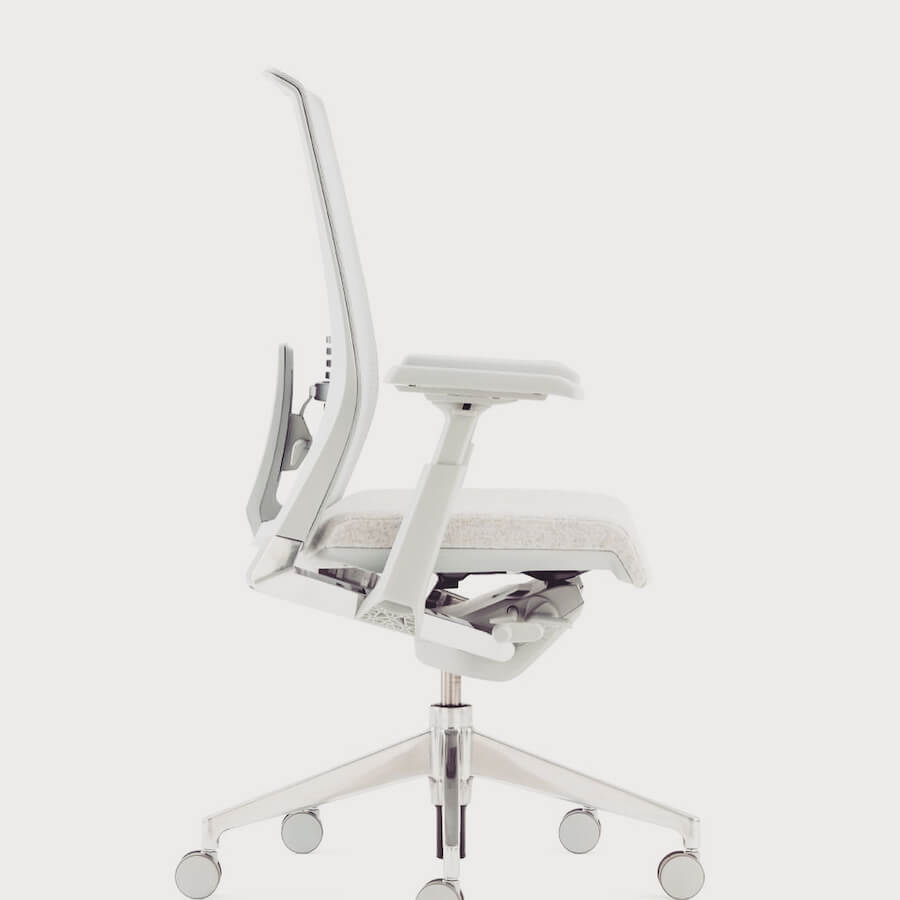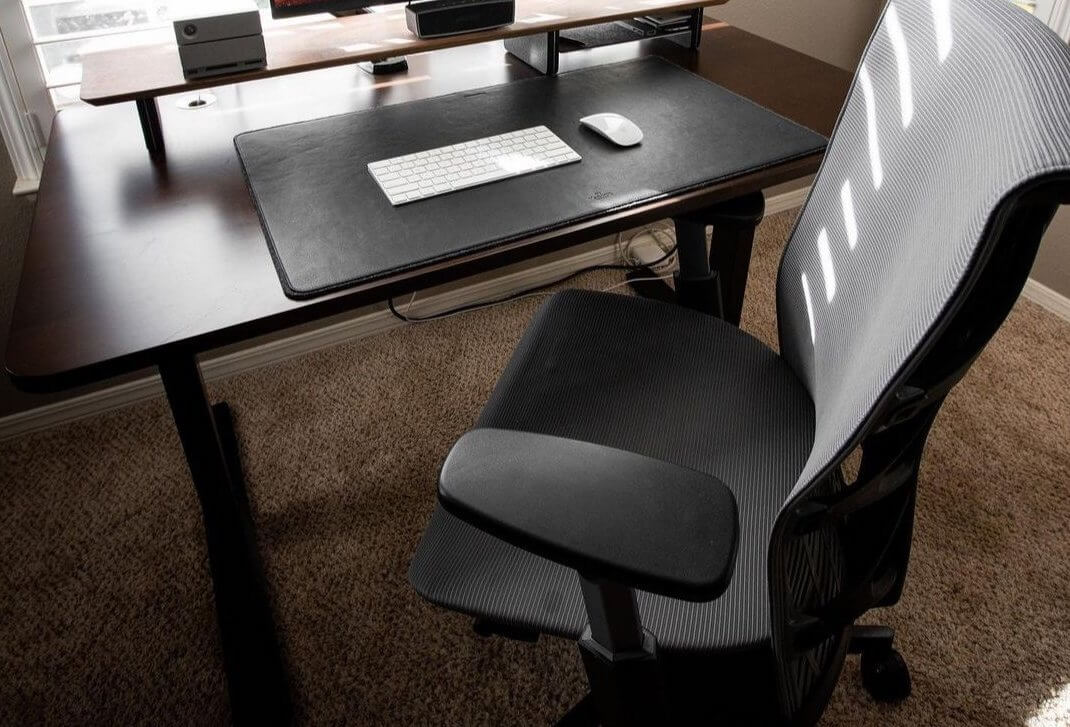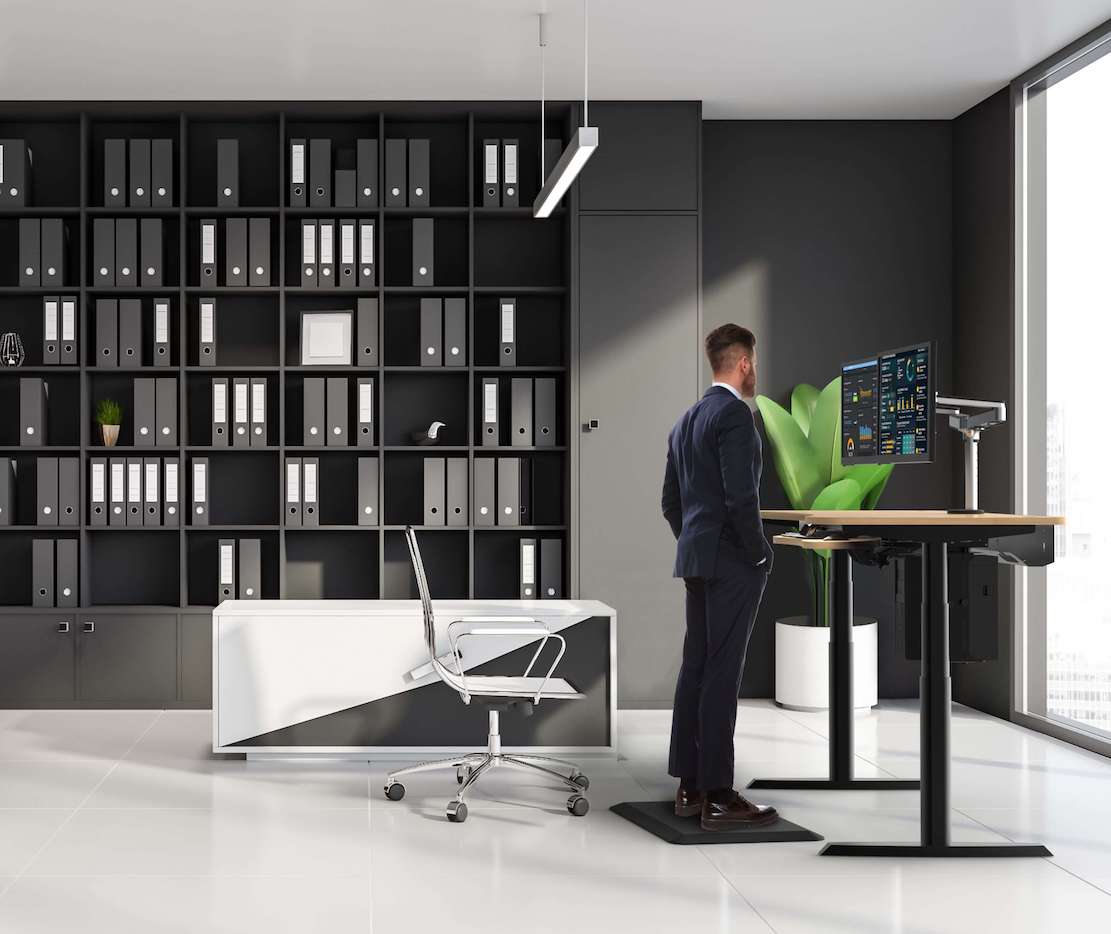An upgraded version will always be a better choice right? Well, most of the time. But we also have to consider if the additional features are well worth the added moolah that you have to spend.
So let’s see if a Very upgrade is going to be of more value to you. And are there instances where a Soji chair can be a better option for you?
| Haworth | Soji | Very |
| Weight capacity | 325 | 325 |
| Seat width | 20” | 19” |
| Seat height range | 16.4”-21” | 16”-21” |
| Seat dept | 27” | 26” |
| Price | Check now | Check now |
The Soji has a lot of adjustment-able features at an affordable price
With the Soji, you can enjoy a multitude of ergonomic features. And these are more than just the basic adjustable seat height that you can find in chairs of the same price. You get almost all the work at a cost of just below 500 dollars.
The Soji even has a Synchro-Tilt mechanism, similar to what you’ll find in an Aeron. It’s also the de facto choice when scouting for a more ergonomic office chair. So it’s a treat to find one in a unit that costs less than 500 dollars.
The Synchro-tilt mechanism will give you that nice and easy recline function. Moreover, the entire unit does feel substantially decent, it even looks similar to an Embody at first glance.
It also has an upright locking position. So you can also use this for tasking work. If you’re looking for a more ergonomic task chair, we highly recommend the Soji.

Both are not office chairs for the petite
The Soji does have a wide range of adjustments, but it will not be able to go low enough for petite users or those who stand 5’2” and below. But it can go high enough for those up to 6’2”.
If you are petite, you might not get that proper angle for your legs. Your knees might go beyond your toes and it will be uncomfortable even for just a few hours. This angle can put too much strain on the knees.
Comfort-wise, it’s hard to choose between the two
Even if the Very is an upgrade of the Soji, the Soji still has a seat cushion that many, including us, find rather indulging and comfortable.
So in this department, we did find it hard to choose between the two units. It will be all up to your individual needs.
The seat of the Soji looks quite thick and soft even from afar. And compared to the Very, it has a more rounded shape. Your butt will have that cradling feeling but you still get that firm support, but you will not sink into the seat nor will it deform.
And if you check the seat depth and width of the Soji, it is an inch larger than that of the Very. Thus it may be more accommodating for those with wider hips and broader shoulders.
This is perfect for those who still need a cushy seat but need firm support for their tush. It somehow feels a lot like the seat of the Fern. so this could be our favorite part of the Soji.
The Very, on the other hand, has thinner padding. So it feels more firm than the Soji. If you need more pronounced and firm support, the Very will be a better choice.

The Soji has a more rigid seat despite a softer seat cushion
One of the things that you’ll instantly feel when you are sitting on the Very and the Soji is the flexibility of the entire unit.
The Very will have a more flexible feel, it will be more amenable to movement. Though it’s not as intuitive as a Zody or liberating as a Fern, you can still feel that it has a bit of giving to it.
The Soji has one rigid seat. So though it has ergonomic features, the rigidness of the Soji can make it comparable to mid-range to high-end task chairs.
The backrest of the Soji will not give in even when you stretch or if you’re reaching for a staple on the other desk.
So if you’re looking for a chair that is more amenable to movements, go for the upgraded unit.
The mesh material of the Soji is decently comfortable, but it will not allow you to sink into the back and the recline might not feel as indulging or comfortable. Though the Very has a more rigid mesh than the Zody, it feels softer and more flexible than Soji.
The frame of the backrest of The Soji is also more pronounced. So at one point, you might feel it digging into your shoulders, especially if you will recline the chair. That’s why we also see the Soji working better in an upright position.
The Soji can provide more of the basic back support
The back support of the Soji is what you’ll find in most basic mid-range office chairs. Despite the presence of a Synchro-tilt mechanism, the lumbar support is very, very soft. We also questioned its presence when we reclined the chair, we almost did not feel it.
The shape of the back, also, doesn’t have that produced S shape that conforms to the natural shape of the back. It is more upright, and the shape of the backrest is more fitting for task work really.
This is far-fetched from the lumbar support of the Very. Aside from having asymmetrical back support, meaning you can adjust each side independently, it is also more pronounced. So those needing serious back support, a firmer one, would fall in love with the Very
This is also the least desirable feature of the Soji. We really can’t tell it’s there. The lumbar part just feels too soft. Even when you push your back against it, it hardly makes contact. This part feels more of a task chair rather than an ergonomic chair to us.
That’s why it can also be a higher-end task chair. And for a task chair, you have 4-way arms and a range of ergonomic adjustable features. The arms are not that solid as the Very’s but it doesn’t feel flimsy.
The upgrade from Soji to a Very is worth your money
For an additional 300 dollars or so, you will get additional ergonomic features. The Very shares the same adjustable features with the Soji plus a lot more. And the build is more solid, feels more robust, and looks more expensive.
The Very just has a different tilt mechanism or recline function. It will have a deeper recline. It does feel more similar to an Areron or an Embody, that’s why it can also be a cheaper alternative to the two high-end chairs.
The Very also feels softer and is more flexible, there goes the upgraded price
But for the caveats, it doesn’t have an upright locking position. So it will not be that comfortable for task work or when you need to sit in an upright position. The backrest will still swing back, it feels more like a floating backrest.
You can get your money’s worth with this upgrade
Yes, for a few additional hundred dollars, you’ll get tons of additional features and a more flexible and slide office chair.
The Very also has more metal parts, You can see and feel that the base is sturdier with more metal parts. The entire chair also has more metal parts than the Soji. So it will also last longer and have a higher weight capacity. Though the seat of the Soji is an inch wider than that of the Very.
The lumbar support of the Very is a first of its kind. It is similar to what Zody has, no other brand might not have this feature. So even for less than 800 dollars, the Very is a promising unit.










